Related Tags
The greatest guitar collection on Earth
Indianapolis Colts owner Jim Irsay has spent 25 years assembling the world’s leading collection of rock ’n’ roll, American history and pop culture artefacts. We touch down in Indiana to pay him a visit.

All images: Eleanor Jane
Over the years, some remarkable guitar collections have featured in the pages of this magazine. But, in terms of owning historic instruments with rock ’n’ roll credentials and sheer spending power, nobody can top Jim Irsay. For the last quarter of a century, the billionaire owner and CEO of the NFL’s Indianapolis Colts has spent big to obtain some of the most iconic instruments in rock history. Gilmour’s Black Strat? A cool $3.9m. Jerry Garcia’s Tiger? $957,500. The Stratocaster that Bob Dylan played at Newport Folk Festival in 1965? $965,000. The Gibson SG that George Harrison used on Revolver? $567,000. The list goes on and on.
- READ MORE: The Best Guitar Albums Of The Year 2021
Yet rather than accumulating expensive toys in some crass display of wealth, talking with Irsay reveals that he has a deep love and appreciation, not only for the timeless music these instruments were used to create but also what they represent as cultural – and indeed countercultural – objects. It’s not just guitars, either. Irsay’s collection also includes Jack Kerouac’s original 36-metre typewritten manuscript for On The Road ($2.4m), Hunter S Thompson’s Red Shark convertible, Abraham Lincoln’s walking cane and an original Apple II manual signed by Steve Jobs in 1980. Perhaps as a nod to Irsay’s own well-publicised battle with addiction, there’s also the working manuscript for The Big Book aka Alcoholics Anonymous. Bought at auction in 2018 for another $2.4m, Irsay acknowledges that the text and its famous 12-step program “has literally saved millions of lives”.
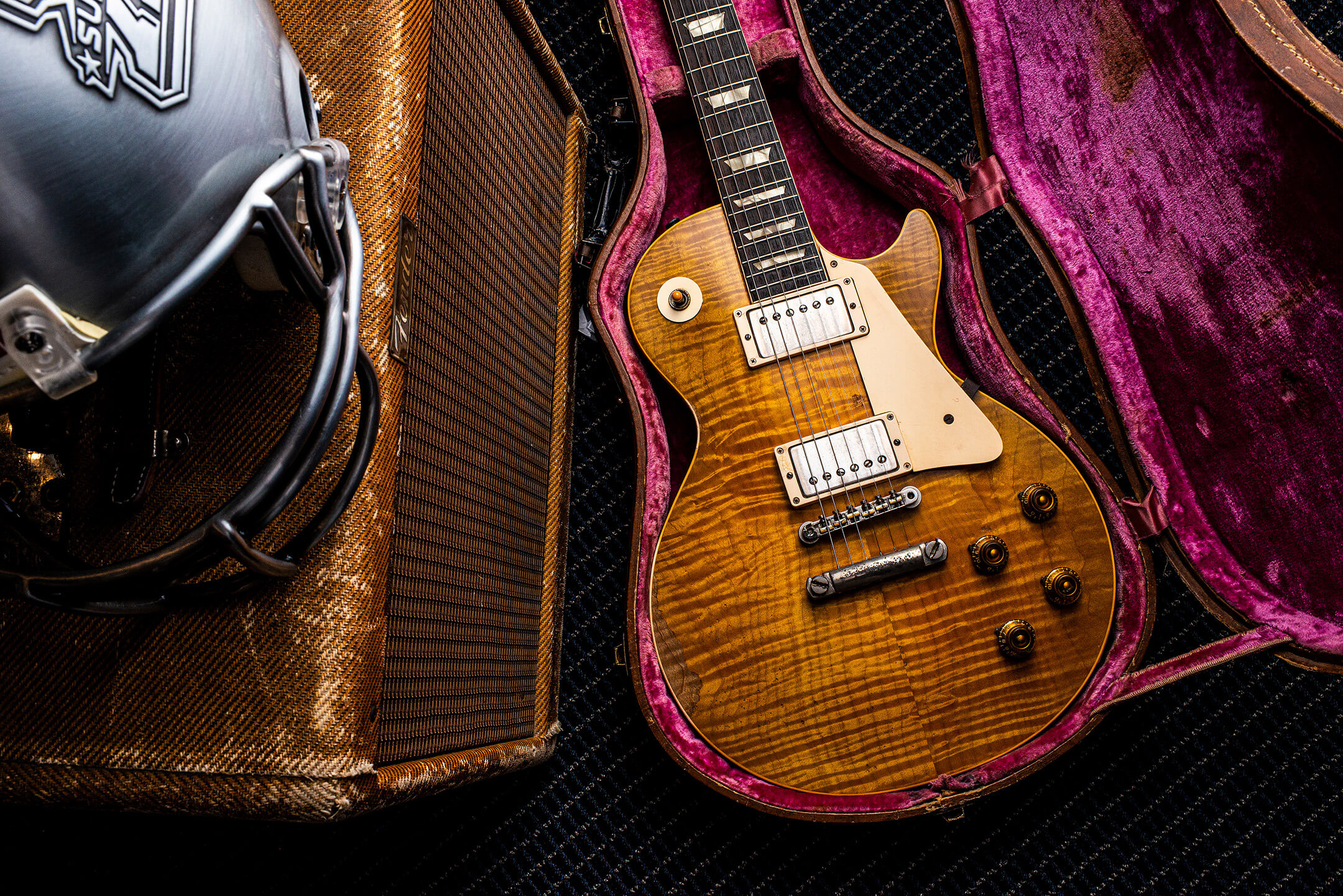
Most of these artefacts currently reside either at Irsay’s home or in his office at the NFL team’s headquarters and practice facility. In the interests of making the collection more accessible to the public, a series of pop-up exhibits and concerts in the USA and Europe are set to be the precursor to the opening of a museum akin to Seattle’s MoPOP, which was founded by Microsoft’s Paul Allen. A personal friend of Irsay’s, Allen passed away in 2018 but could regularly be found bidding on many of the same celebrity-owned instruments as the Irsay team, including Ringo Starr’s Beatles-era drums.
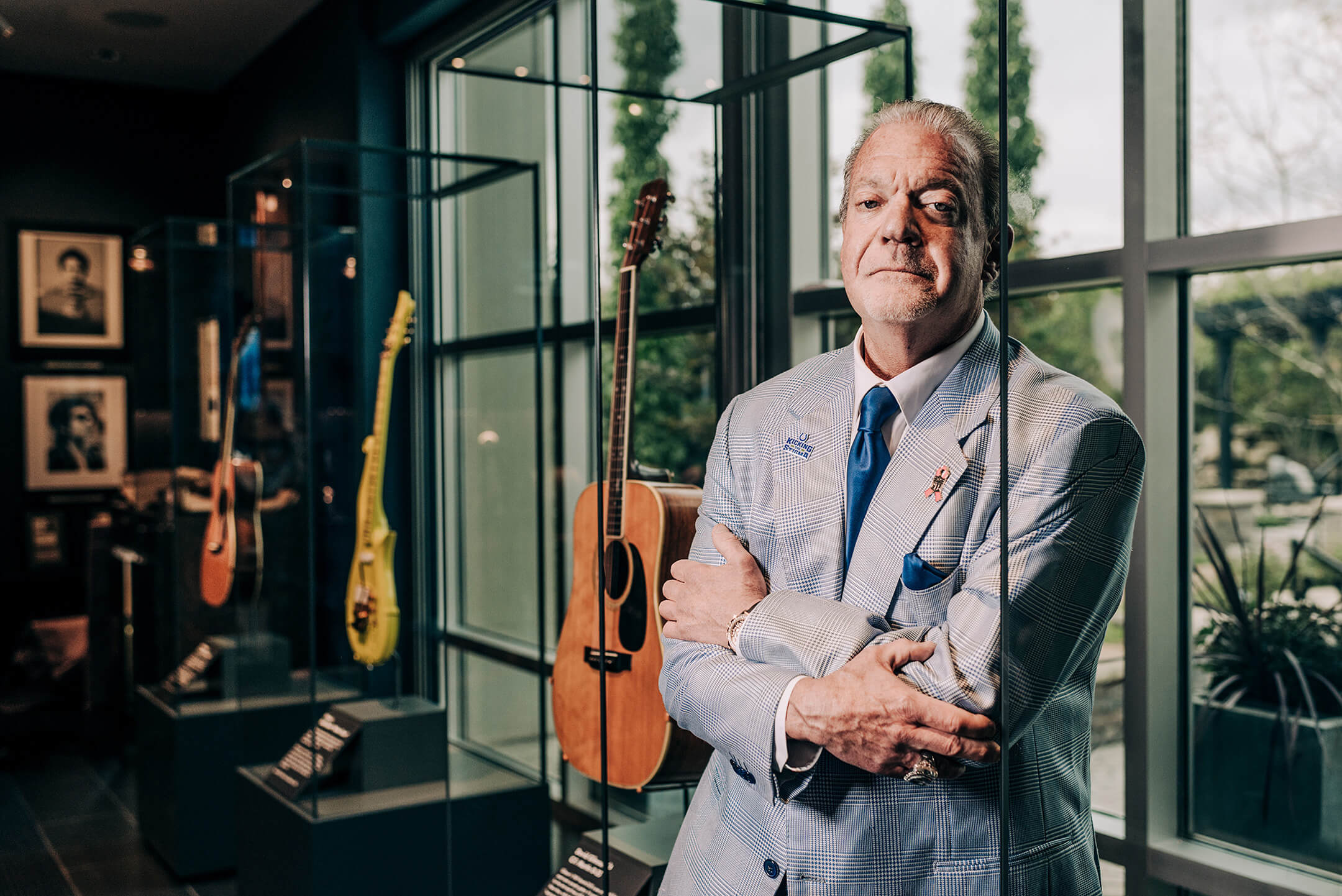
Although the museum’s permanent location hasn’t yet been finalised, for the 62-year-old Colts owner, it’s all about inspiring young people to pick up the baton. “History is so important,” he says. “So much of what we’re about as a world, as humanity, is tied to music. It’s been that way ever since the cavemen were around the fire and they scrawled on the walls, they beat things – there was always this feeling of self-expression. And a deeper feeling than just having words or sign language, or hunting and gathering systems. To me, it’s really important that the museum is alive. How you experience it when you walk in? I want it to be interactive.”
“I can’t be Pete Townshend or Chrissie Hynde or whoever because that’s just not me. But I can be a curator”
Irsay envisages a space where musical instruments coexist with the other objects in the collection to tell the story of American history and 20th century pop culture. Whether it’s David Gilmour’s Martin D-35 or the franchise his late father Robert purchased back in 1972, he is adamant that he sees himself more as a custodian than an owner. After all, millions of people have strong and intensely personal connections to their favourite musicians and sports teams.
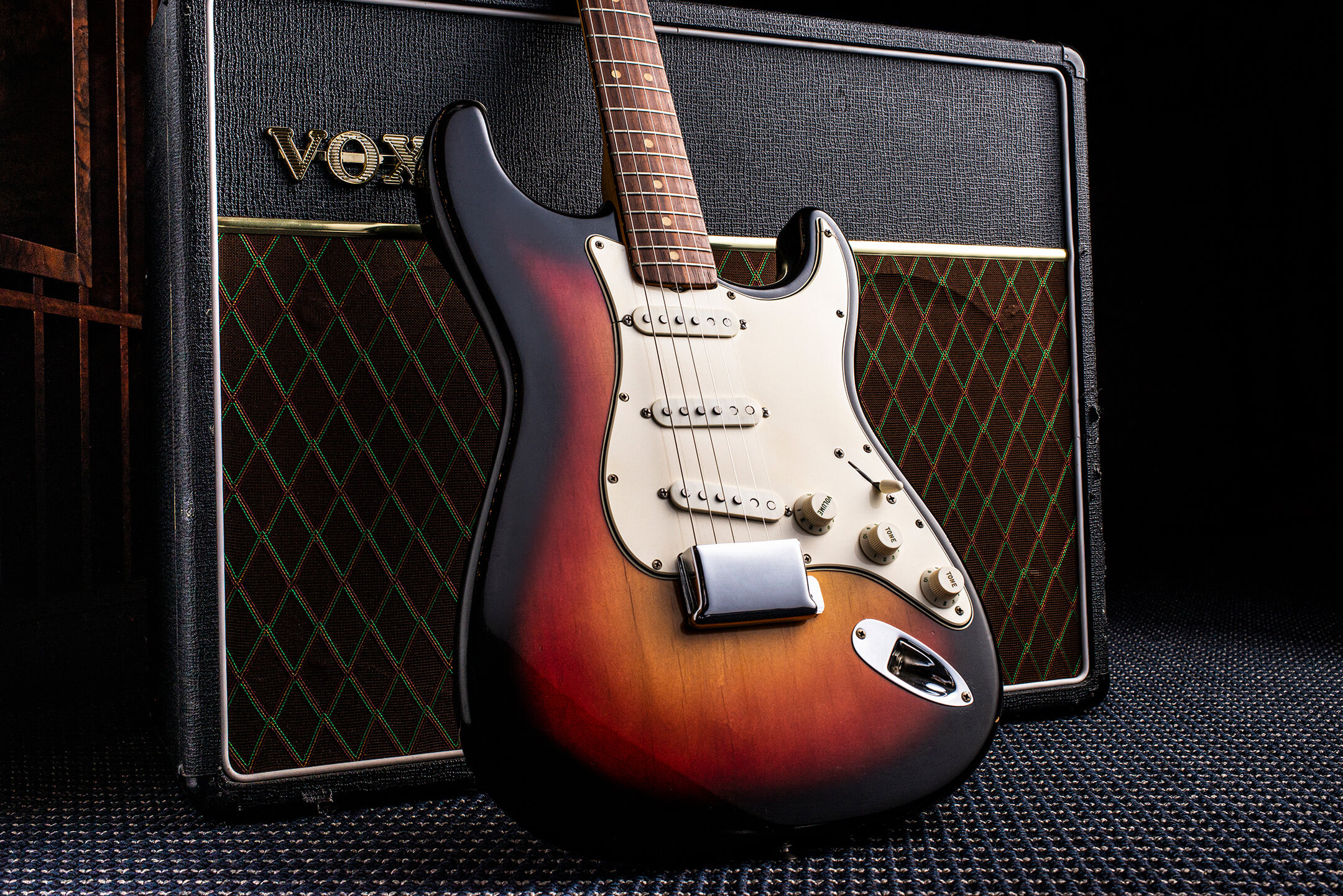
“When I first got the [On The Road] scroll, Rolling Stone said that I would destroy it!” Irsay says, laughing. “We did some fun things with it but we were always careful. We never put it in harm’s way. But I like people to be able to say, ‘I played Tiger’, if you are a guitar player of any magnitude, or even if you just want to hold it. I get letters all the time, ‘Please can I come on a pilgrimage, I just want to see Tiger, it means so much to me’. Our emotional and spiritual lives are so tied to the arts, so tied to music. If someone has a death in the family or a transformative time in their life, and a certain song came out at that time, they remember that moment. It’s way bigger than just saying, ‘Oh, that’s a nice song. That’s a cool groove’. It’s much more than that. I mean, it’s the fabric of people’s lives. It’s so important to me that in the museum, people can play things and touch them.

“Like any music lover or fan I want to try to have fun with it and share it,” he continues. “But I don’t possess it. I don’t have any ownership over it. I want to make that very fucking clear. With the museum it’s about, ‘How do you create the Willy Wonka factory? How do you sell the golden tickets?’ I can’t be Pete Townshend or Chrissie Hynde or Natalie Merchant or whoever, because that’s just not me. But I can be a steward and a curator.
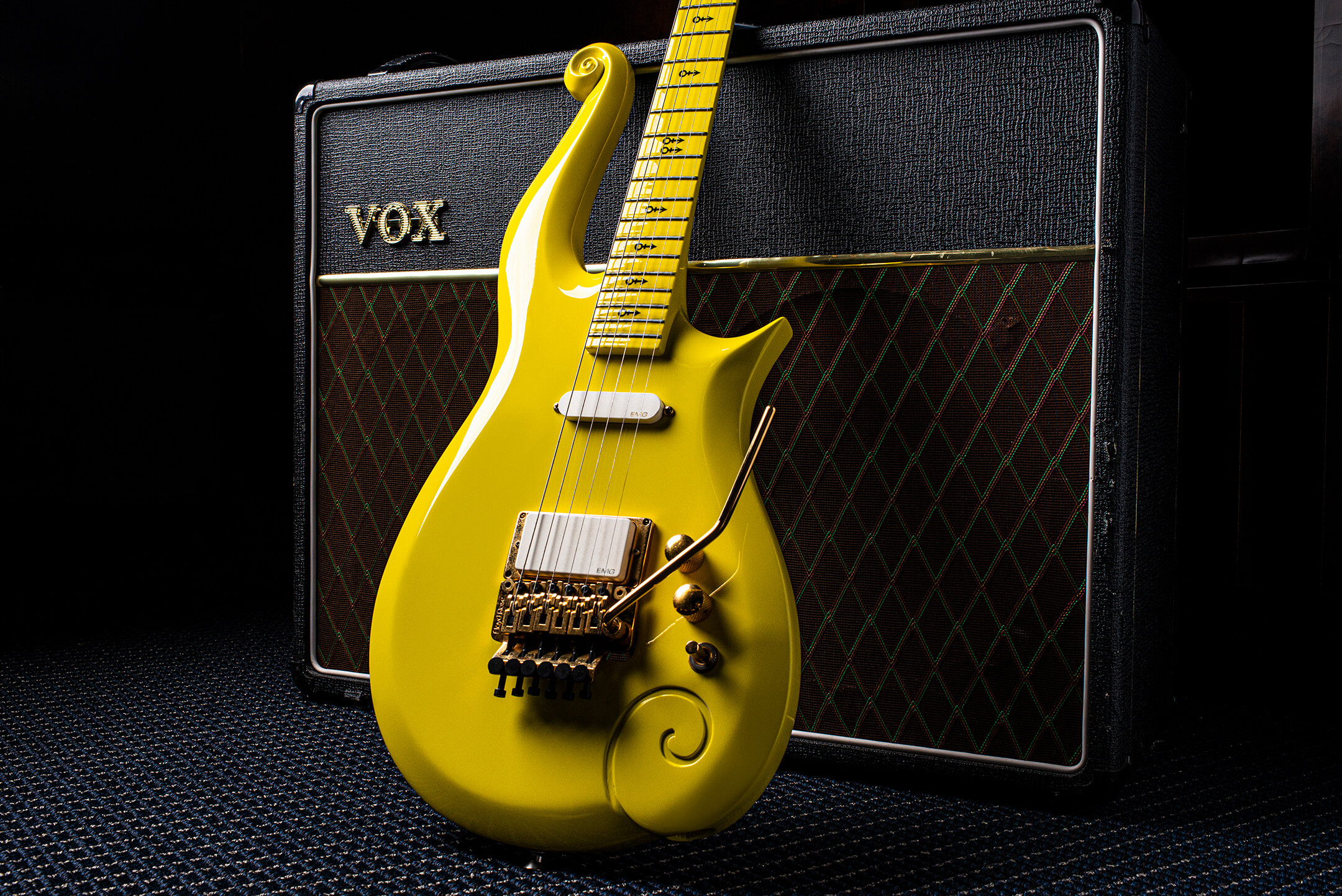
“It’s the same as the Horseshoe [the Colts]. I have to look after the Horseshoe – that’s my job. Sometimes it’s not popular. Sometimes you might think I’m coldhearted. But it’s professional football. I have this obligation. But the great thing is that I love what I do, so it’s not work. I’m blessed. I don’t really have a job. Watching this collection come together over about 25 years has been a beautiful thing. There’s so many things. I have things I don’t even know I have. You can’t keep track, it’s impossible. My biggest regret was when I lost Wilson, the volleyball from Cast Away. But I was kind of early in the process and I was outbid. I’ll never let that happen again.”
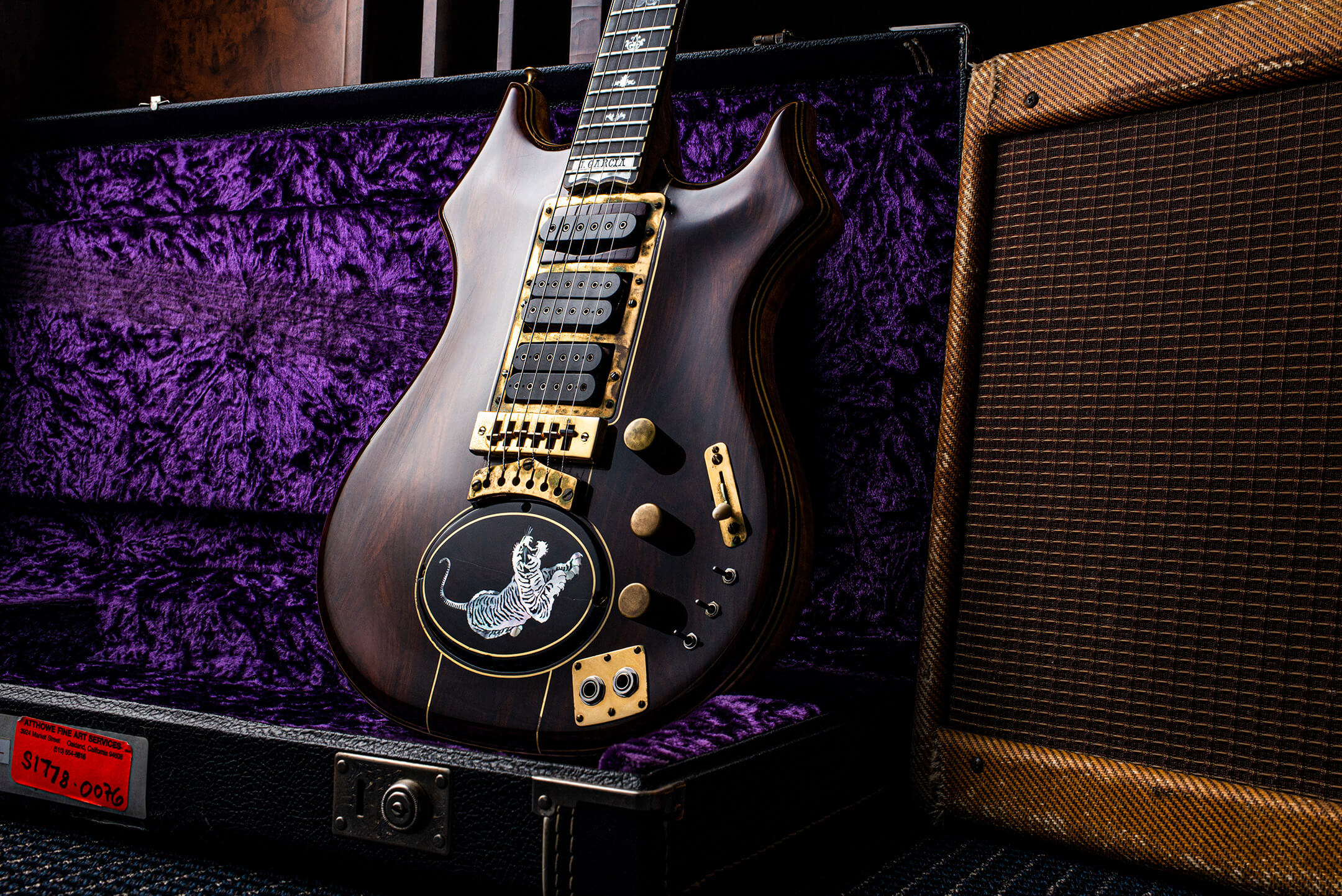
Player power
Despite their extraordinary value, Irsay is relaxed when handling these historic instruments. Almost alarmingly so. During the course of our photoshoot, he not only pretends to smash the Black Strat but he also mischievously tucks a lit cigarette under the strings behind the nut. That said, the legendary guitars all around us aren’t simply props for photoshoot shenanigans these days – Irsay is keen to get the guitars in his collection into the hands of musicians.
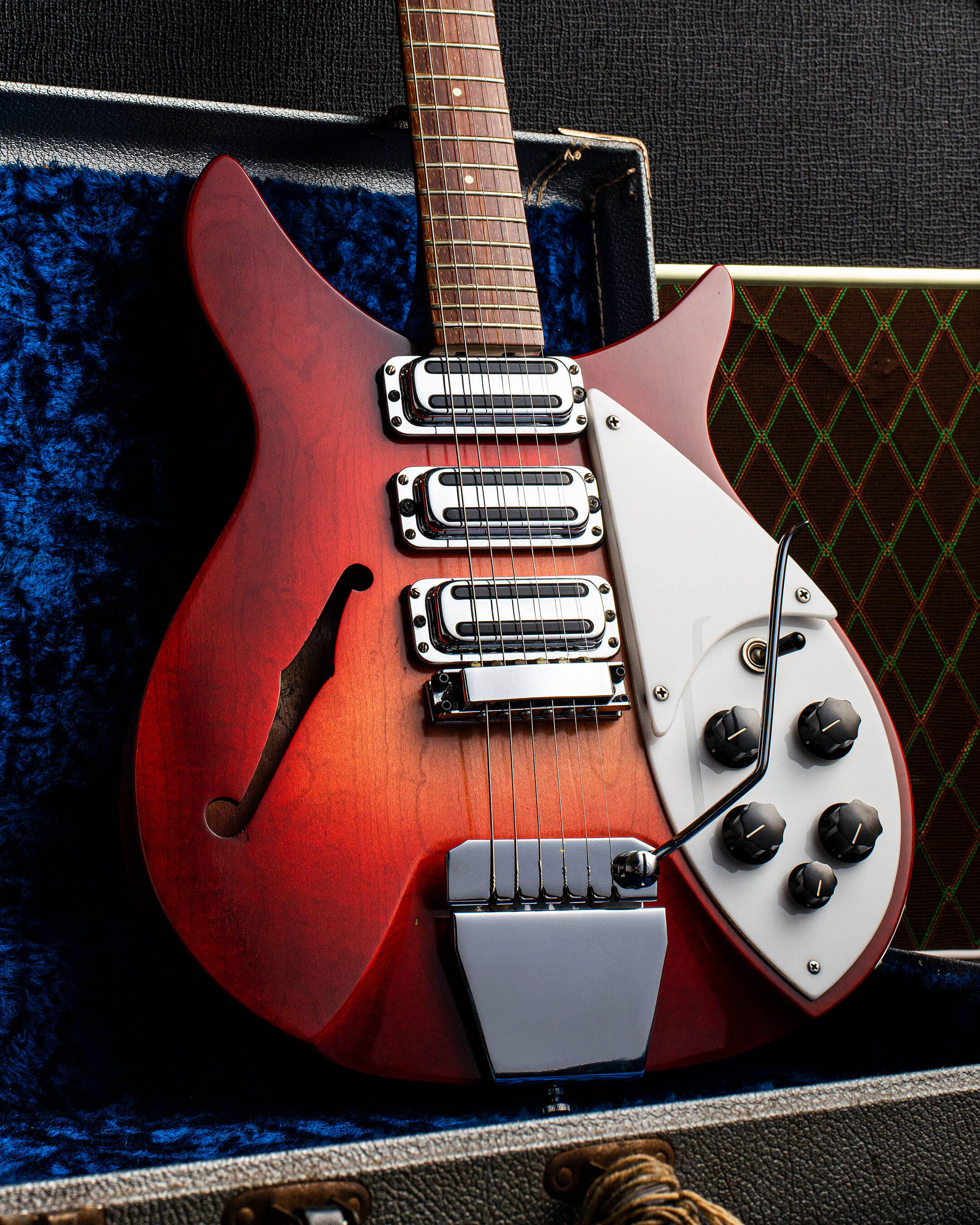
to Ringo Starr during the making of The White Album
This is evidenced on day two of our stay in Indianapolis when the team puts together an impromptu concert performance in the grounds of a disused psychiatric hospital. The lineup features a cast of leading local session pros led by guitar tech and record producer Marc Johnson, plus Irsay on vocals and the guest of honour, Kenny Wayne Shepherd. Marc’s weapon of choice is Dylan’s Newport Stratocaster and Kenny Wayne selects the Black Strat.
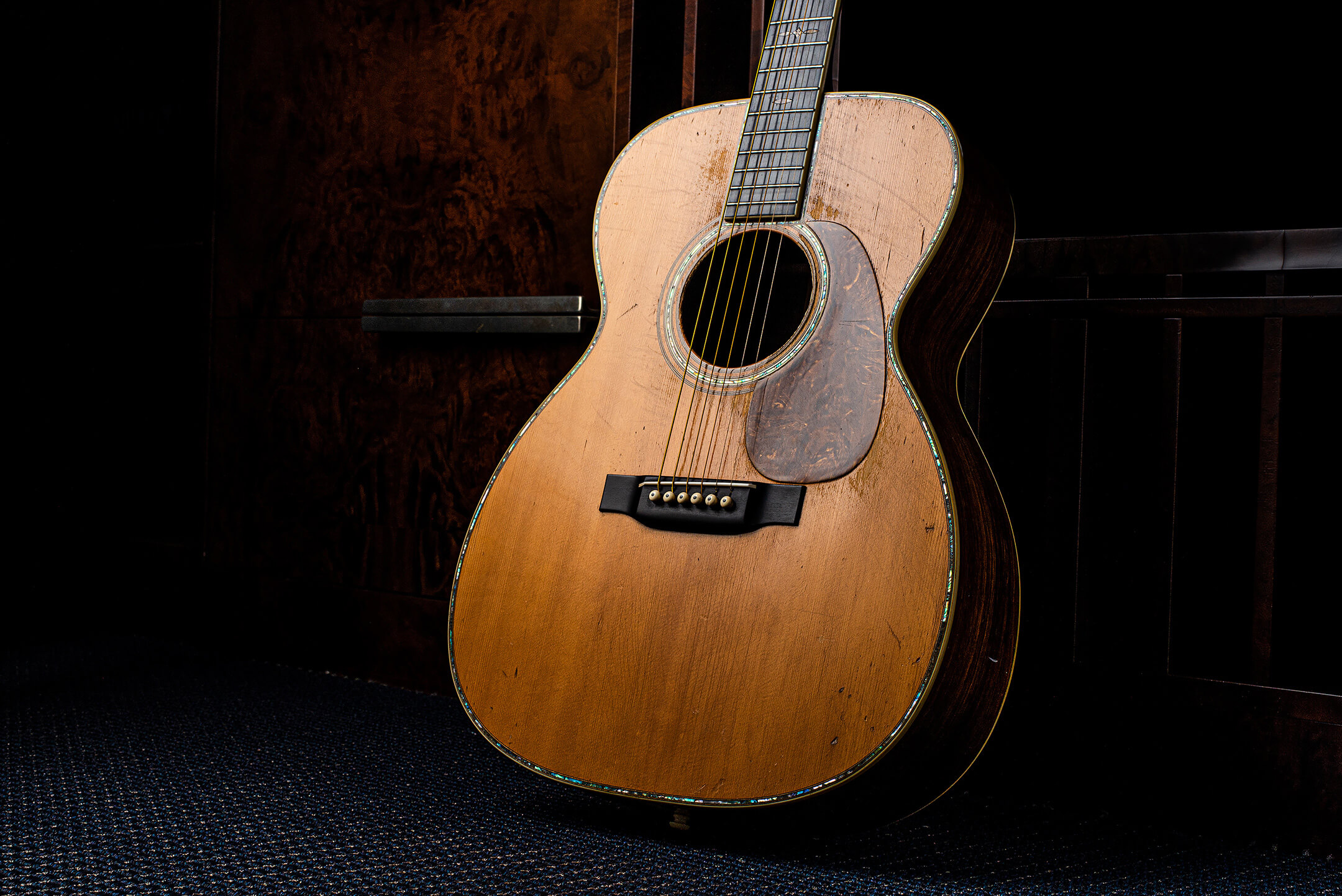
“I don’t think it’s ever had that kind of blues played on it before,” Shepherd remarks later, and our own close encounter with the Black Strat reveals a setup that’s clearly been optimised for a less ferocious touch than that of the Louisiana-born blues-rocker. Shepherd may prefer heavier strings and an action with a little more fight but it doesn’t stop him from sounding pretty spectacular with David Gilmour’s longtime number one plugged into a vintage 5E3 Deluxe. For the small audience in attendance, it’s a thrill to hear such a storied guitar played at close quarters in a different musical context.
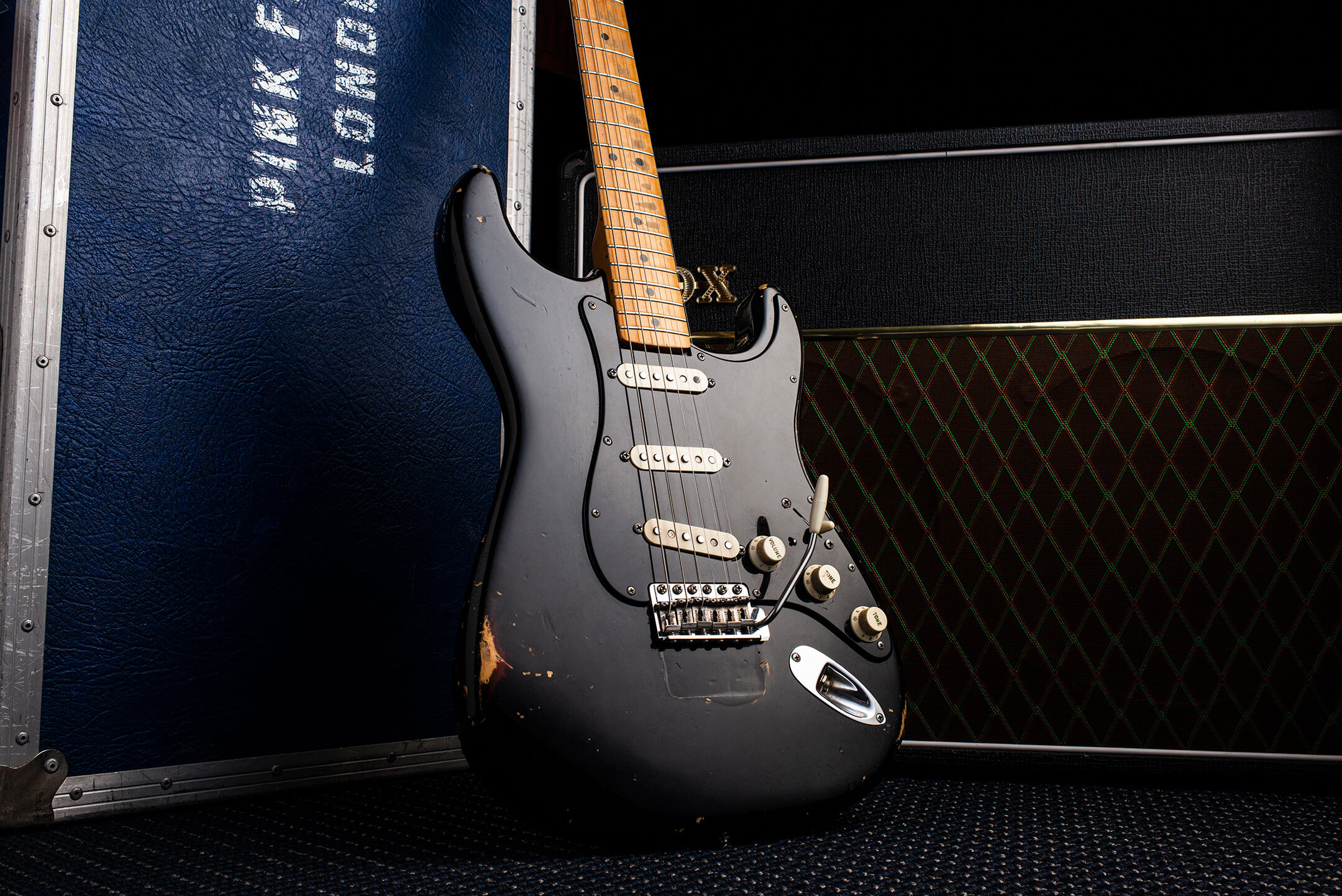
Though many of the pieces in the collection have been present during seismic moments in popular music history, it’s interesting to compare guitars that spent a long time in the service of one artist to those instruments whose spell in the limelight was more fleeting. For example, Gilmour’s Black Strat, heavily modified with very few original parts other than the body, still feels imprinted with the Pink Floyd star’s identity. The lightness and elasticity, the short vibrato arm – everything points to the elegant, lyrical playing style for which Gilmour is famous.
“I LOVE WHAT I DO. I’M BLESSED. WATCHING THIS COLLECTION COME TOGETHER OVER
25 YEARS HAS BEEN A BEAUTIFUL THING”
Then there’s Bob Dylan’s Newport Stratocaster. When the folk messiah turned Judas and performed Maggie’s Farm, Like A Rolling Stone and Phantom Engineer (an early version of It Takes A Lot To Laugh, It Takes A Train To Cry) with an electric band on 25 July 1965 at the Newport Folk Festival in Rhode Island, this short but controversial set would later be hailed as a watershed moment in pop history. Yet the 1964 Stratocaster Dylan played that day was soon left behind on a private aeroplane and he never looked back. Today, the neck’s startling lustre and the overall originality of the instrument tell us little about its former owner and, perhaps fittingly, there’s a frustrating and slightly icy sense of detachment that leaves us feeling no closer to rock’s greatest poet and greatest enigma.
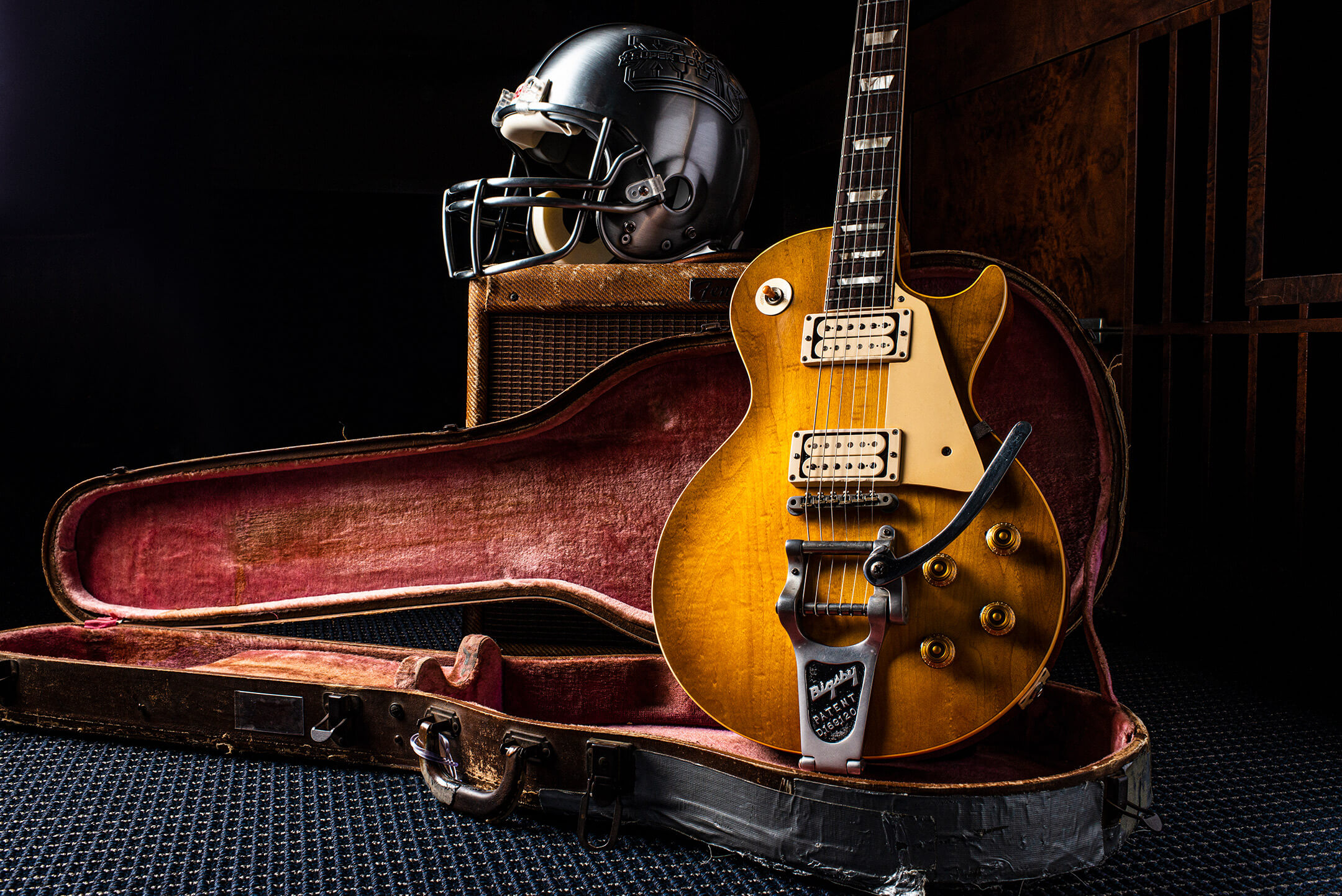
And then there’s John Lennon’s 1963 Gretsch. Though Lennon’s time with the guitar was relatively brief, the double-cutaway 6120 featured on the groundbreaking Paperback Writer and Rain sessions in April 1966. In November of the following year, the Gretsch was gifted to his cousin David Birch. While recording Revolver, The Beatles were reimagining the pop landscape from one studio day to the next, and that certainly gives this instrument a special allure – even if John obviously preferred his Epiphone Casino. Notwithstanding, it’s simply one of the most appealing vintage Gretsch guitars we’ve ever played and it instantly feels like home. Did we grant ourselves a moment of self indulgence and actually play Paperback Writer on one of the guitars it was recorded with? Of course we did.

and it quickly became a studio favourite, featuring on Revolver
Roads less travelled
During our conversation, it’s apparent that Jim finds a sense of spirituality in the transcendent power of music. He also draws parallels between trailblazers in music and creatives in business – “watching James Brown work is no different than Steve Jobs” – and over the years has found kindred spirits in the many musicians he counts as friends.
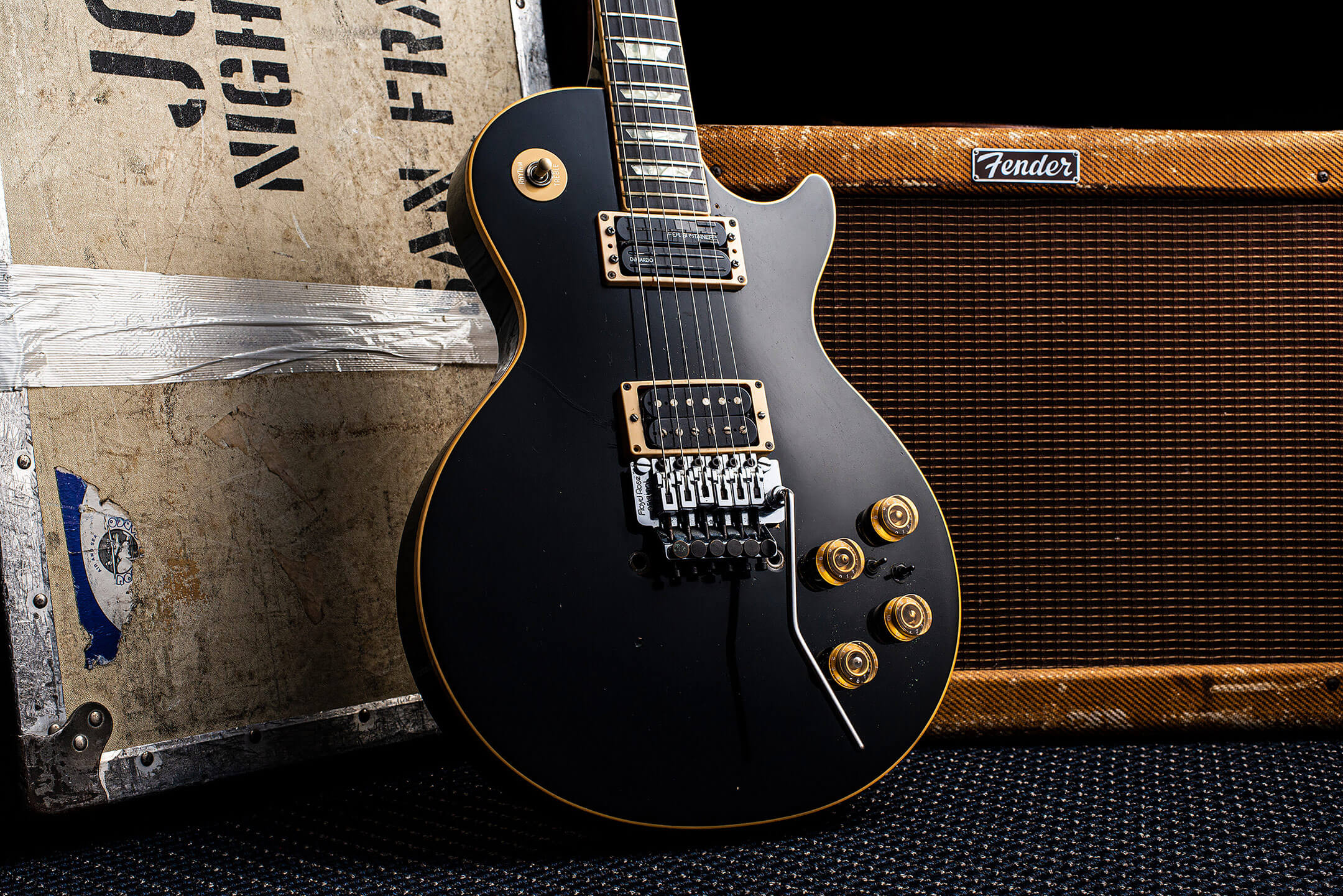
“It’s like Dylan says, ‘He not busy being born is busy dying’,” Irsay asserts. “When I talk to a lot of artists I know and I start trying to get them to talk about the past a little bit, a lot of them are like, ‘I’m not interested in that. I want to talk about now, I want to talk about what I’m doing today and I’m interested in the moment that I’m in.’ As long as we’re living and breathing and experiencing life… we’re adventurers, you know? We’re journeymen, we’re seekers. We’re always seeking. I see the seekers in my mind walking across the old, beautiful lands of this country 300 years ago, not with muskets, but with guitars slung over their backs. Because to me, that’s really what it’s about.”
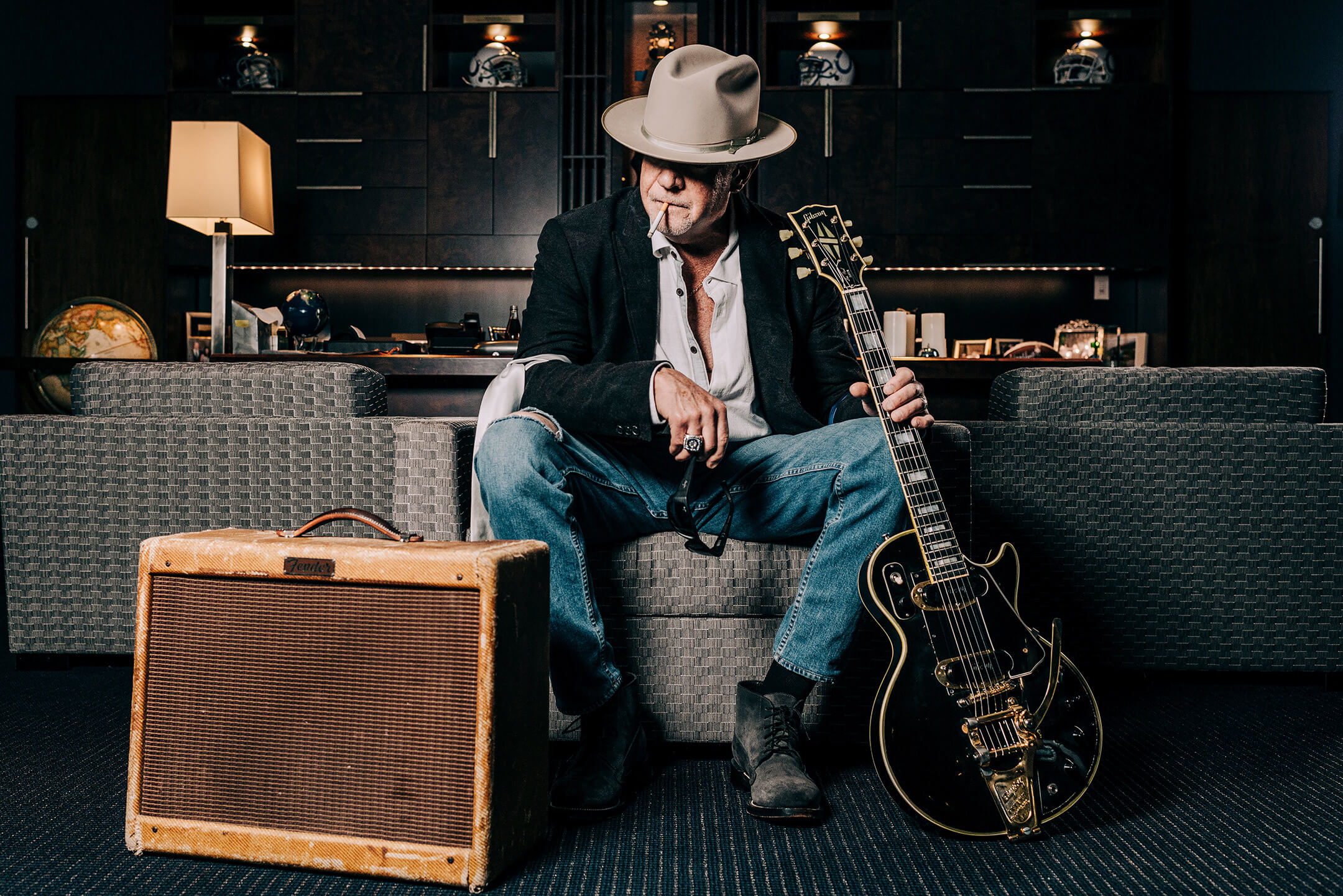
In seeking out and exhibiting objects from the past, Irsay aims to inspire young musicians to create the iconic music of the future. And there’s no sign of the pace slowing any time soon – the collection continues to expand and the plans for it get more and more ambitious. Recent additions include the SG Special used by Pete Townshend during The Who’s exhilarating performance on The Rolling Stones Rock And Roll Circus and the Steinway piano used on tour by Elton John from 1974-1993.
“I see the seekers walking across the old, beautiful lands of this country 300 years ago, not with muskets but with guitars slung over their backs”
As well as being used by Elton himself at sold-out Dodger Stadium shows in October 1975, the piano would go on to be played by Freddie Mercury during Queen’s A Day At The Races tour in 1977 and by Paul McCartney in front of a television audience over over one billion people during the Live Aid finale in 1985. In another Beatles connection, Elton also played it at a concert in Madison Square Garden in November 1974. To settle a bet, John Lennon showed up and played three songs in what would prove to be his final public performance. Irsay is clearly thrilled with this acquisition, describing it as “unbelievable”.

Before the time comes to stop the tape, we have to ask our host the question that invariably comes up when two Beatles obsessives engage in conversation. Given his great love for wordsmiths such as Dylan and Kerouac, Irsay’s answer is perhaps unsurprising. “In high school it was always, ‘Are you a Lennon or McCartney man?’ I mean, I love Paul, but there’s just no question. I was a Lennon man.”
Visit jimirsaycollection.com to find out more about the collection’s upcoming tour dates.




